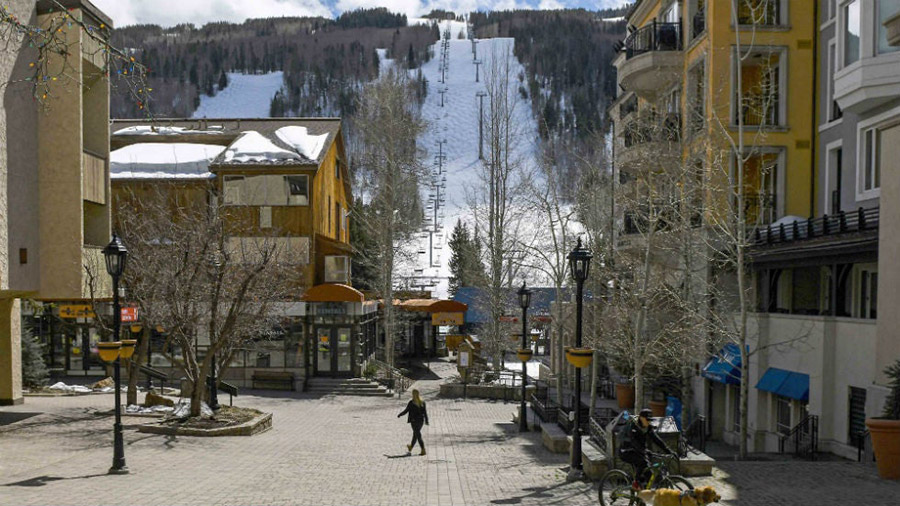The ongoing pandemic and mixed economic indicators are combining to negatively impact mountain resorts in the Western U.S., with marginal snowfall at some destinations adding to the mix as tentative gains during October reversed course in November, according to DestiMetrics.
Aggregated data from 18 mountain destinations in seven Western states was compiled and analyzed by DestiMetrics, the business intelligence division of Inntopia, and revealed sharp declines in several categories as of November 30 as ski and snowboard resorts move into the holiday season.
For the month of November, occupancy was down 15.2 percent in a year-over-year comparison to last November while the Average Daily Rate (ADR) for the month was up 23 percent. Despite the decrease in occupied rooms, the rates enabled properties to achieve a 4.3 percent gain in revenue compared to last year, marking the second consecutive monthly revenue gain and only the second time since February.
The downward trend for winter became apparent mid-month when bookings made during the month of November for arrivals in all six months from November through April dropped 44.1 percent compared to the same time last year. The decline in booking pace led to a 34.9 percent decline in occupancy for the six-month winter season as of November 30. Helping mitigate the impact of weak occupancy is the relatively stable ADR for the winter, down 2.2 percent; however, the combination of low occupancy and flat rates lead to a 36.4 percent decrease in on-the-books revenue.
“As the winter season kicked off in early November, there was optimism about the Thanksgiving holiday, the opening of many resorts with new operational safety plans and consumer mood as the stock market set another record high,” observed Tom Foley, senior vice president for Business Operations and Analytics for Inntopia. “But what started out with such a promising uptick during October, changed abruptly due to the rising surge in COVID-19 cases across the country and led to increased cancellations and a notable decrease in new bookings.”
Economic Measurements
Key economic indicators were mixed in November as COVID-19 continued. As of November 30, the Dow Jones Industrial Average (DJIA) surged ahead of a 12.9 percent increase from October and delivered the highest monthly close in the Index’s history. This reversal from the losses in September and October was primarily driven by investor enthusiasm about the positive new for a coronavirus vaccine.
“Although strong financial markets can typically be expected to buoy destination travel, ongoing health concerns along with localized restrictions in some destinations and feeder markets are likely to dampen positive feelings resulting from the Dow Jones’ big November finish,” cautioned Foley.
The Consumer Confidence Index (CCI) dropped 5.2 percent in November to take it to 96.1 points, and the first time it dropped below the significant 100-point benchmark since August. The national unemployment rate dipped from 6.9 percent to 6.7 percent but reflects the 400,000 workers who stopped their job search, removing them from unemployment calculations. Although 245,000 new jobs were added in November, it was the fifth consecutive month that job creation slipped from the previous month and illustrates a stall in employment recovery. Most critically, 9.2 million workers remain unemployed since the onset of the pandemic.
Key Considerations
In this pandemic era, the lodging situation can change rapidly as evidenced by the sharp reversal of occupancy for the Thanksgiving holiday—going from very strong occupancy in the four weeks and up to two weeks before the holiday began, then cooling off in the last two weeks of the month. That abrupt shift delivered mixed results as occupancy declined and cancellations increased while rates stayed strong.
Another variable shaping lodging is the continuing dominance of short-lead incremental fill in recent months—even with booking volume down dramatically. Cautious travelers who retreated from bookings of 90 days or longer in advance in June have further compressed those lead times with the average booking now only 37 days prior to arrival. That is well below the average of 50+ days with a significant percentage of those bookings coming within days before arrival.
One of the bright spots in this month’s DestiMetrics report is the continuing extension of the length-of-stay for reservations booked in November, up 0.22 nights on average. Visitors arriving on Monday are staying an aggregated 1.45 nights longer than last year, while Sunday arrivals are also extending. Conversely, Saturday arrivals were leaving almost a full day earlier than last year — going from an aggregated stay of 2.72 nights last year to 2.11 nights this year.
“The positive short-term momentum experienced during October reversed quickly halfway through November as COVID-19 cases surged alarmingly across the country,” Foley noted. “And while strong room rates and longer stays are positive developments, the decline in the booking pace over the past 45 days triggered by pandemic concerns is going to make recovery for January through April pretty challenging, even if the pandemic eases and market conditions improve,” he cautioned.
















